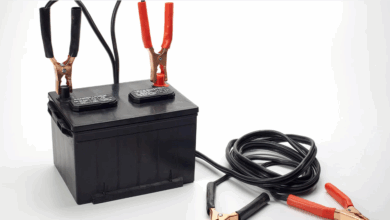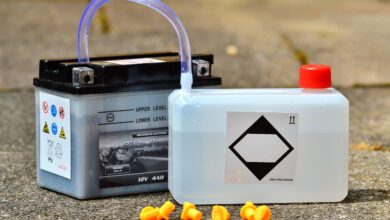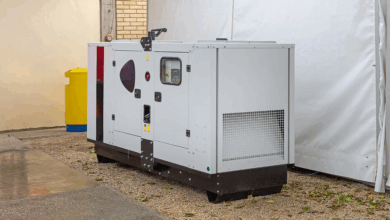Best Budget Small Generators That Don’t Skimp on Power
Best Budget Small Generators That Don’t Skimp on Power: Finding Reliable Portable Power Without Breaking the Bank
In an unpredictable world, having access to reliable power, even in a small package, can be a game-changer. Whether you’re facing a power outage, heading out for a camping trip, tailgating at a game, or tackling a DIY project far from an outlet, a small portable generator offers essential convenience and security. However, the price tag on some high-end models can be daunting.
The good news? You don’t have to spend a fortune to get a generator that can handle your basic needs. The market is full of budget-friendly small generators that offer surprising capability without completely emptying your wallet. The key is knowing what to look for and managing expectations. This article will guide you through finding the best budget small generator that delivers the power you need without unnecessary cost.
What Exactly Defines a "Budget Small Generator"?
Let’s set some parameters. When we talk about "budget small generators" in this context, we’re generally looking at:
- Price Point: Often under $600, sometimes even under $400, depending on the wattage and features. This is a significant saving compared to premium models that can cost $800-$1500 or more for similar wattage.
- Size and Portability: Compact, relatively lightweight (often under 50-60 pounds), and easy to carry or transport in a car trunk. Designed for portability, not permanent installation.
- Power Output: Sufficient for running essential small appliances, electronics, lights, phone chargers, or small power tools. Typically in the range of 1000 to 2500 running watts (with higher starting watts). They are not designed to power a whole house or multiple large appliances simultaneously.
- "Don’t Skimp on Power": This means the generator provides enough stable power for its intended small-scale uses, operates reliably within its limits, and offers reasonable runtime for its size and price. It won’t be the most feature-rich or quietest, but it will perform its primary function effectively.
Key Factors to Consider When Shopping on a Budget
When looking at budget models, it’s even more crucial to prioritize features based on your specific needs. Sacrificing every premium feature for price isn’t wise, but identifying where you can compromise is key.
-
Wattage (Running vs. Starting): This is the most critical factor.
- Running Watts: The continuous power the generator can provide. Determine the total running watts of the devices you might use simultaneously.
- Starting Watts (Surge Watts): The brief surge of power needed to start motor-driven appliances (refrigerators, pumps, power tools). This is usually 2-3 times the running watts for a split second. Ensure the generator’s starting watts can handle the highest surge requirement of your devices.
- Budget Tip: Be realistic. A budget small generator likely won’t start a full-size refrigerator and run a microwave simultaneously. Calculate the most critical items you need powered at once. A common target for small-scale use is 1500-2000 running watts.
-
Type of Generator (Conventional vs. Inverter): This is often where budget generators differ most.
- Conventional Generators: Use an alternator to produce raw AC power directly from the engine’s speed.
- Pros: Generally cheaper per watt, robust, simpler technology.
- Cons: Louder, power output can fluctuate with engine speed, not ideal for sensitive electronics (laptops, smartphones, modern TVs) without a surge protector.
- Inverter Generators: Produce AC power, convert it to DC, and then "invert" it back to clean, stable AC power. They often have variable engine speed, adjusting output to demand.
- Pros: Much quieter, produce "clean" power safe for sensitive electronics, more fuel-efficient.
- Cons: Traditionally more expensive, can be complex to repair.
- Budget Insight: The good news is that the price gap for smaller inverter generators has narrowed significantly. Many budget brands now offer 1600-2200 watt inverter models that are surprisingly affordable and represent excellent value if you need clean power and lower noise.
- Conventional Generators: Use an alternator to produce raw AC power directly from the engine’s speed.
-
Noise Level (Decibels – dB): Generators are noisy, measured in decibels. Every 10 dB increase is roughly perceived as twice as loud.
- Consider: Where will you use it? Camping or close neighbors? You’ll want a quieter (lower dB) unit. Job site or emergency backup far from others? Noise might be less of a priority.
- Budget Insight: Inverter generators are almost always quieter than conventional ones of similar wattage. Budget conventional generators can be quite loud (70-80 dB+ at 23 feet), while budget inverters might be in the 55-65 dB range. Look for models listing dB ratings.
-
Runtime and Fuel Efficiency: How long will the generator run on a tank of fuel at a typical load? This affects how often you need to refuel.
- Consider: Emergencies often require extended runtime. Camping trips benefit from not needing frequent refills.
- Budget Insight: Inverter generators, with their variable speed engines, are usually more fuel-efficient than conventional ones running at a constant speed. Tank size varies greatly; check the listed runtime at 25% or 50% load for comparison.
-
Outlets: Do the available outlets match your needs? Look for standard 120V AC outlets. Some models include DC outlets (for charging car batteries) or USB ports (very convenient for electronics).
-
Weight and Portability Features: Since it’s a small generator, portability is key. Check the dry weight. Are there comfortable handles? Wheels (less common on truly small models, but worth noting on slightly larger ones)?
- Brand Reputation and Reviews: Even on a budget, stick to brands with a reasonable track record and positive reviews for customer service and reliability within their price tier. Look for common complaints in reviews – are they about performance, build quality, or just missing high-end features (which is expected)?
Types of Budget Small Generators to Consider
Instead of listing specific models (which fluctuate in price and availability), let’s look at the categories where budget options shine:
-
Entry-Level Inverter Generators (1600-2200 Running Watts):
- Why They’re Great for Budget: Over the last decade, competition has driven down the price of smaller inverter technology. Brands like Wen, Champion, Predator (Harbor Freight), and Craftsman offer models in this wattage range that provide clean power, lower noise, and decent fuel efficiency at prices often comparable to conventional generators of similar power from years past.
- Best For: Camping, tailgating, powering sensitive electronics during outages, light DIY work where noise is a concern.
- Expectations: They won’t power central air or multiple power-hungry devices. Runtime might be moderate on a single tank. They might lack features like electric start or fuel gauges found on pricier models.
- Budget Conventional Generators (1500-2500 Running Watts):
- Why They’re Great for Budget: If clean power and low noise aren’t your absolute top priorities, conventional generators offer the most watts for your dollar. Brands like Champion, Wen, and other value-focused manufacturers produce reliable, straightforward units.
- Best For: Running power tools on a job site, emergency backup for lights and basic non-sensitive appliances (fans, coffee maker), charging batteries.
- Expectations: They will be significantly louder. Power quality might not be suitable for unprotected sensitive electronics. Fuel efficiency is generally lower than inverters.
Choosing the Right One For Your Needs
- For Camping/Tailgating: Prioritize an inverter generator for lower noise (to keep fellow campers/tailgaters happy) and clean power for electronics. Aim for 1600-2200 running watts – enough for lights, a fan, phone chargers, maybe a small electric grill or coffee pot.
- For Basic Home Backup (Lights, Phone, Small Fridge): Calculate the wattage needed. A refrigerator’s starting watts are key (often 600-800 running, but 1800-2500+ starting). A 2000+ running watt generator (either inverter or conventional, depending on budget and noise tolerance) is usually sufficient for lights, communication, and keeping essential food cold.
- For DIY/Job Site: A conventional generator might be perfectly adequate and offer more raw power for tools like circular saws, drills, or small compressors at a lower price. Noise and power cleanliness are often less critical here. Aim for wattage that matches your most demanding tool’s starting watts.
Maintaining Your Budget Generator
Even the best budget generator requires proper care to last. Don’t skimp on maintenance:
- Read the Manual: Seriously, it has crucial information on oil type, maintenance schedule, and operation.
- Use Fresh Fuel: Stale gasoline is the most common cause of starting problems. Use fuel within 30 days or use a fuel stabilizer if storing for longer.
- Check/Change Oil: Follow the recommended schedule (often after the first few hours, then regularly). Clean oil is vital for engine longevity.
- Run It Periodically: Start the generator every 2-3 months and let it run for 15-20 minutes under a light load (like a few lights or a fan) to keep the carburetor clean and the parts lubricated.
- Proper Storage: Store in a dry, well-ventilated area. If storing long-term, follow the manual’s instructions for draining fuel or using stabilizer.
FAQs
- How many watts do I actually need? Add up the running wattage of everything you want to power simultaneously. Then identify the item with the highest starting wattage and ensure the generator meets that surge requirement. Examples: Phone charger (5-10W), LED light (10-20W), Fan (50-100W), Coffee Maker (800-1500W), Small Fridge (600-800W running, 1800-2500W starting).
- Is a budget conventional generator okay for my TV or laptop? Conventional generators produce power with more voltage fluctuations ("dirty power"). While some electronics have built-in protection, it’s risky. An inverter generator is strongly recommended for sensitive electronics. If you must use a conventional generator, use a quality surge protector, but understand it’s not a perfect solution.
- Are budget generators reliable? Reliability varies by brand and model, but many budget brands have significantly improved quality in recent years. They might not have the lifespan of a top-tier Honda or Yamaha running thousands of hours, but for intermittent use (camping, occasional outages), a well-maintained budget generator from a reputable value brand can provide years of service. Read recent reviews to gauge current quality control.
- What does "low-oil shutoff" mean? This is an important safety feature. If the engine oil level drops too low, the generator automatically shuts off to prevent catastrophic engine damage. Most decent generators, even budget ones, include this.
- How loud is 60 dB vs. 75 dB? 60 dB is roughly the volume of a normal conversation or an air conditioner at 100 feet. 75 dB is more like a vacuum cleaner or a loud conversation right next to you. The difference is very noticeable, especially outdoors.
Conclusion
Finding a reliable portable generator on a budget is entirely possible if you focus on core needs and understand the trade-offs. By prioritizing essential features like sufficient wattage for your planned uses, choosing between conventional and inverter technology based on your power quality and noise requirements, and sticking to budget-friendly brands with decent reputations, you can secure a valuable tool for emergencies and recreation. A budget small generator might not have all the bells and whistles, but with proper selection and maintenance, it can provide dependable power exactly when you need it most, proving that you don’t always have to spend a fortune to stay powered up.




![How to Bypass CO Sensor on Generator – [4-Step Safety Guide]](https://www.generator411.com/wp-content/uploads/2025/08/co-sensor-on-generator-390x220.png)